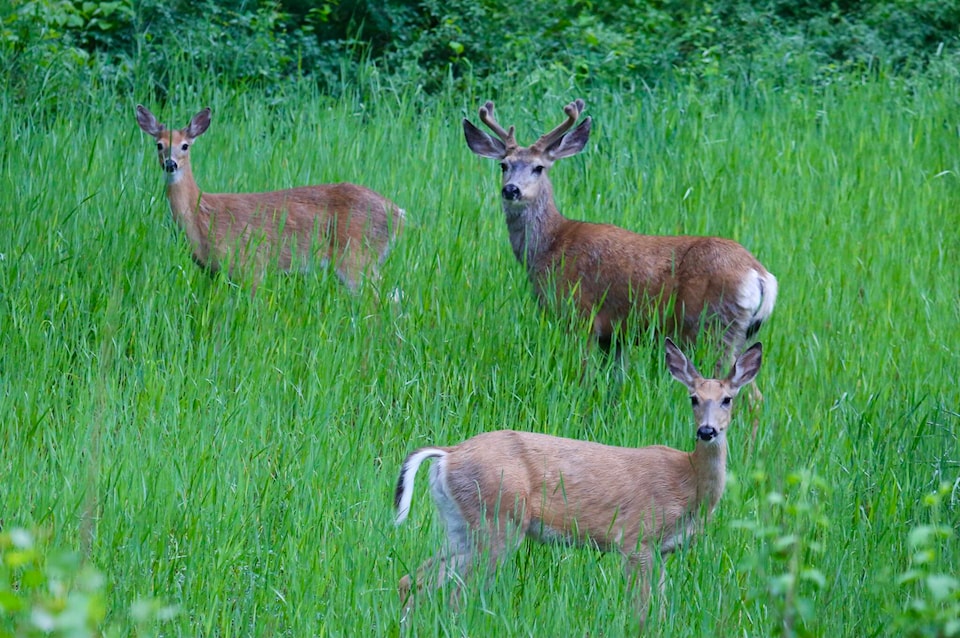The never-ending mix of sun and rain is helping to grow ample green succulents for members of the family Cervidae living in the Trail area.
Ron Wilson spotted this little family gathering close to the Trail high school Saturday night.
If you have a recent photo to share with Trail Times readers email it large or actual-size to editor@trailtimes.ca.
Read more: Trail Times Local News
Read more: Trail Times Local History
Distribution and habitat
The 2 most common deer in Canada, white-tailed and mule deer, are closely related species of the genus Odocoileus. Both occur in many subspecies including dwarf island forms. Fossils of white-tailed deer (O. virginianus) predate the last ice age. The mule deer (O. hemionus) originated more recently. Its most primitive subspecies, the black-tailed deer (O. h. columbianus), lives along the Pacific coastline from Alaska to California. A Eurasian species, fallow deer (Cervus dama), has been successfully introduced to James Island, BC.
Mule deer, characteristic of the mountains and foothills of western North America, sometimes occur as far east as Manitoba. White-tailed deer occur across southern Canada and as far north as Yukon and the Northwest Territories. If protected, both species thrive around human settlements. White-tails, being very secretive, may thrive with little protection especially in severely disturbed landscapes. While both species are wide-ranging, they do not compete well for space when confronted with Old World deer, for example the wapiti.
Survival strategies
Both the mule and white-tailed deer are adapted to feed on soft vegetation; however, they have different antipredator strategies. Mule deer leap over obstacles in the path of pursuing predators; white-tails combine hiding with rapid getaway over unobstructed ground. Both can live in groups on open terrain and be solitary in dense forests. Females may become territorial when raising young. Black-tailed deer may cluster into group territories.
newsroom@trailtimes.ca
Like us on Facebook and follow us on Twitter
